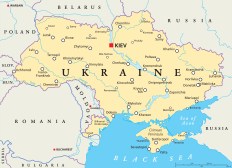Army leadership and many of the users of the Army’s new enterprise email system are not satisfied with the results so far, but Deputy CIO Mike Krieger says the department, along with DISA and DMDC, are working to isolate all the issues and address them as the migration moves forward.
Krieger quoted Colonel Gary Langston in a blog post who said “”Migration is like painting your house. No matter how good the paint is, you have to prep the house. Once you prep the house, really good paint will be great. If you don’t prep the house, you should have just used the cheap stuff. At some point you have to talk about the homeowner and every member of the paint crew, not just the paint.”
Krieger pointed out what the department has learned to date:
- We need to reinforce normal help desk/reporting procedures. Many issues are going undocumented, and frankly we need every data point to continue to improve the customer experience.
- We need to communicate migration schedules better and improve communications to end-users. Advance notification needs to become the norm.
- We started this journey convinced we had good configuration control over our desktops. That is NOT true. EE is forcing us to fix — a good thing.
- We also THOUGHT we had consistent firewall/Top Level Architecture (TLA) configurations. That is NOT true either. EE is forcing us to fix — another good thing.
- We KNEW we had a problem with the Non-Person Entity (NPE)/Distribution List (DL) naming policy. We fixed it in May (thought we’d be done in Feb) and are catching up. CIO/G-6 used the opportunity to clean-up all our NPE’s and DLs.
- We KNEW we had issues with data quality on Common Access Control cards, but not to the extent we actually experienced. EE is forcing us to use the Defense Manpower Data Center (DMDC) data base as the authoritative data source and to fix the data quality issues — a good thing.
- We did NOT expect to see ActiveClient/Tumbleweed/Vista/Outlook/Exchange Integration issues. EE is forcing us to fix — a good thing. All the vendors are pulling together to identify the problems and their solutions.







